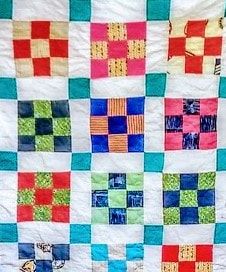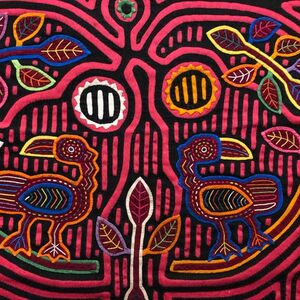Day 1, Part 1
Thanks to our children, Scott and I took a trip to LaConnor and Anacortas, staying at the Swinomish Casino and Lodge. Our first stop on our journey was at the Quilt and Fiber Arts Museum in LaConnor situated in the Ganches Mansion. The three floor Victorian Mansion displayed a different collection on each floor.
Photo by Scott Biles
Since no photos are allowed in the museum, I will share three from the museum brochure. My main purpose in going to the museum was to see the Hartsfield Quilt Collection, a collection that dates back to the early 1850’s. The oldest quilt in the collection was created by Ms. Molly from Whitlock, Tennessee. She was a slave and the seamstress for the plantation’s master. She had two children by her owner. One son, Richard Caldwell who was 9 years old when he became a free person, kept his mother’s quilts and passed them down to his son Philip. The collection was added to through the years by other members of the Caldwell-Hartsfield family and eventually came to Jim Tharpe, who is sharing these treasured pieces and their stories with the public. The one quilt on display created by Ms. Molly was a partial piece of a hexagon quilt made from scraps of fabric from her masters quilts and clothing.. It was originally totally pieced and quilted by hand.
Nine patch Quilt from the Collection. Image from the Museum Brochure. This is not the quilt on display created by Ms. Molly.
These days you can buy Molas in Panama or Colombia; it is not allowed to sell Molas outside these countries because they are of cultural heritage and the Guna’s forbid it." (From the Fiber Arts and Museum Brochure)
One of the Molas from the Collection. Image from the museum Brochure
The first floor housed a multimedium collection from the San Juan County Textile Guild.
We both enjoyed seeing the collections. There were many take aways for both of us. Scott's main take away of the Hartsfield collection is that the quilts survived. I concur. Family's do not often keep quilts. Quilts can often be found in charitable stores or landfills. I am also amazed that women of the past made quilts for utilitarian purposes. They used scraps from old clothing, leftover fabric, and scrap donations from family and friends. They were not made with the beautiful fabrics we purchase specifically for quilts today. Beauty was a secondary outcome. Many of the quilts were torn or fixed, but they have stood the test of time.



1 comment:
Sounds like you had fun. Did you get a chance to see the quilts hanging in the store windows in Anacortes? I haven't made it there yet, but hope to. Love the quilt from the Molas collection.
Post a Comment